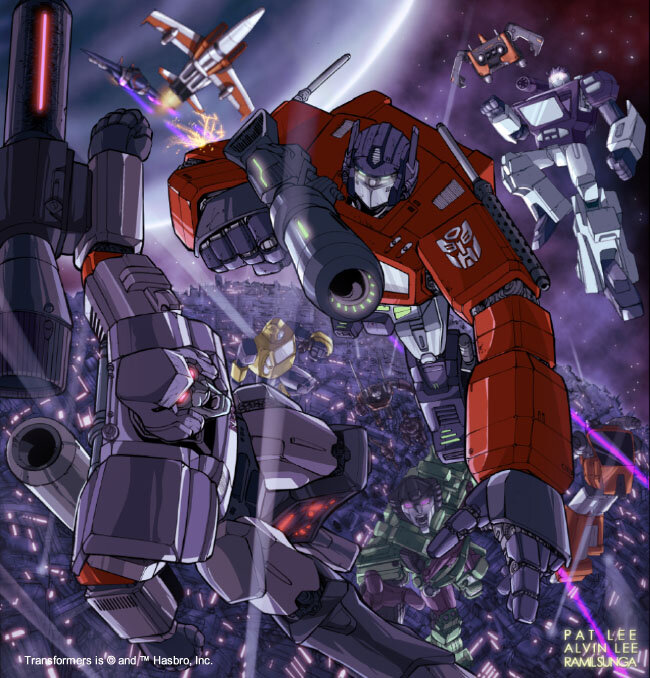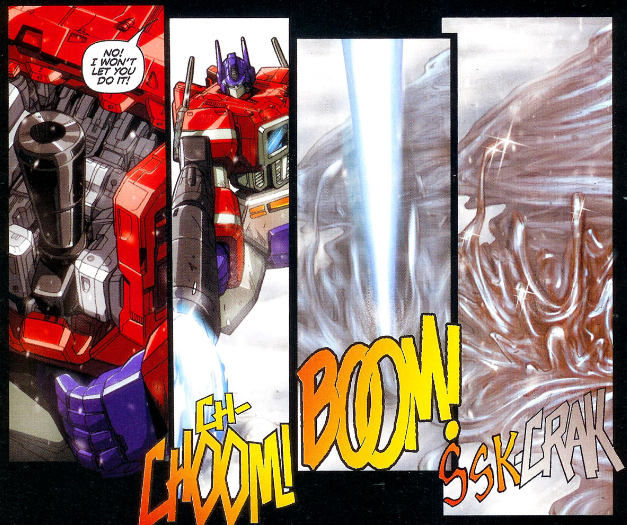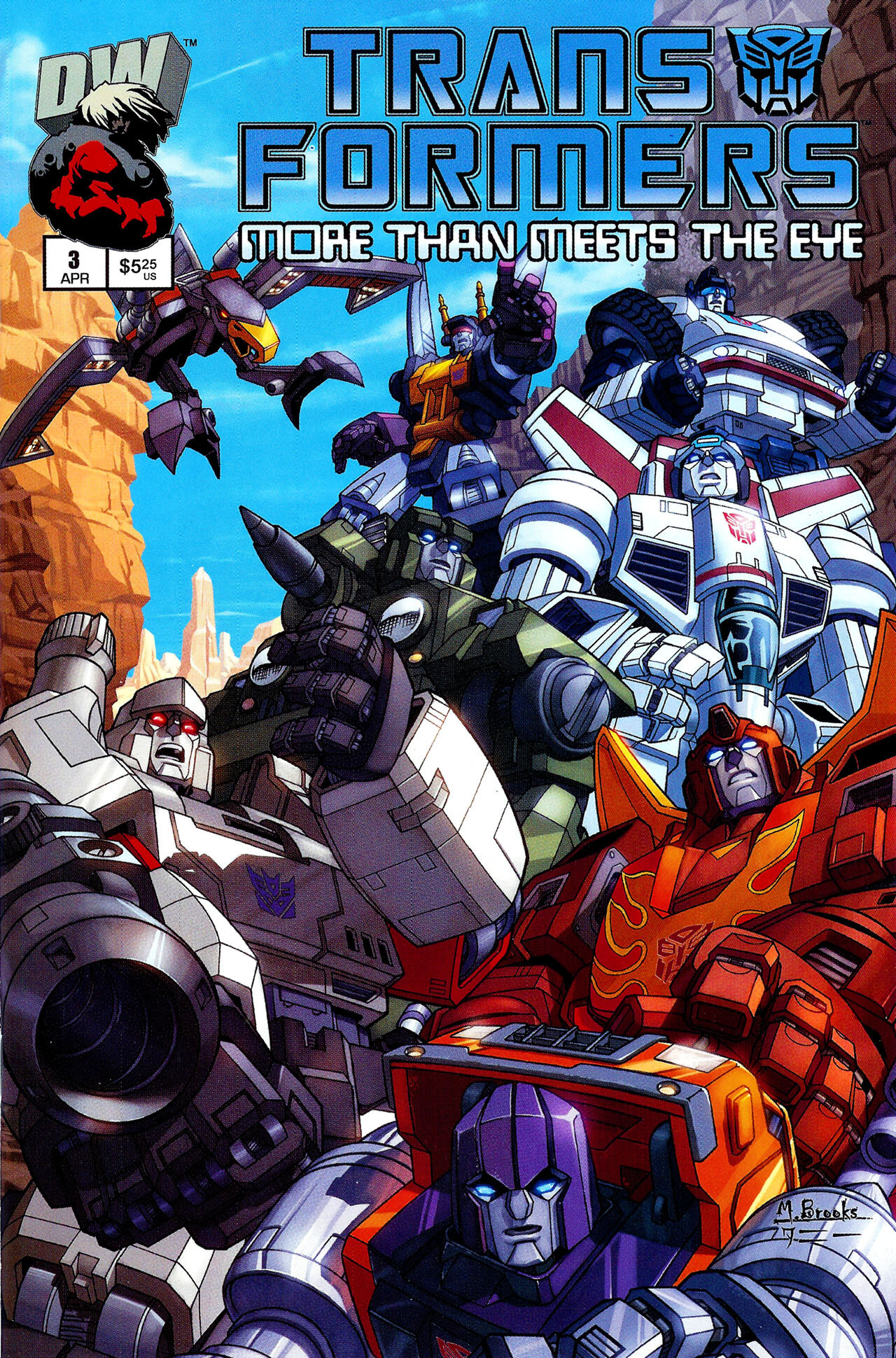Dreamwave Productions' Transformers // Liscensed to Cash-In
Transformers has a varied history with comics, which is putting it lightly. Ever since 1984, when they were co-created by Hasbro, Marvel Comics, and Takara, Transformers has usually had something on the newsstands in comic form…
...outside of the timespan between 1994 and 2002. The Transformers franchise had fallen into a bit of a slump in sales by 1994, so Hasbro had decided to end their relationship with Marvel at the time. However, the franchise was only slumbering for a few years, as the Beast Wars would pop up in 1996 and bring Transformers back into the toy aisles for good. There were no comics published at this time, much to the lament of the fans at the time.
One of the few places to get insider information for comics and cartoons in the days before the modern internet was Wizard Magazine. In 2000, they did a feature called “Big 80s” featuring dozens of properties that their prime readership (25-35-year-old males) would have a ton of nostalgia for. Please keep in mind that this was long, long before 80s and 90s nostalgia became the primary focus for pop culture’s biggest cash-ins. It’s safe to say that didn’t begin until 2007’s Michael Bay directed Transformers, at least to some degree. Wizard Comics not only wanted to show off old properties that they considered worth bringing back, but they also chose key popular artists to make their favorite 80s properties once more - and the artists would also choose what writer they wanted to work with the artist on the property. What properties were represented?
Thundercats, as drawn by Jim Cheung.
Masters of the Universe, as drawn by Ed McGuiness.
GI Joe, as drawn by J Scott Campbell.
Teenage Mutant Ninja Turtles, as drawn by Joe Madureira
Of course, we also had Transformers, as drawn by Pat and Alvin Lee. This was submitted officially from their comic company, Dreamwave Productions. Pat Lee’s choice for a writer for his dream Transformers comic? Frank Miller.
Yeah, this would have aged well. Text (mostly) from All-Star Batman and Robin #8.
Meanwhile, the actual art style did actually catch the eye of fans, who ate this up like it was their first drink of water in the middle of the desert. Hasbro would have been crazy not to notice this, and the art itself is actually not that bad overall. The “anime” styling met with the Japanese origins of the 84’ Transformers animation’s earliest days, and the art did look fairly dynamic for the time.
Wizard would bring Pat Lee back for issue 118 of Wizard for a section of articles called How to Draw Mecha. The result was… complex.
I think we should have stopped two steps back.
Pat Lee’s advice was also terribly miserable, ranging between “If you like mecha skinny, draw like Neon Genesis Evangelion. If you like bulky, draw Mechwarrior” and “Is there empty space under the arm? Shove a bazooka in there.”
In 2002, Hasbro began to shop around with comic companies to look for a new Transformers comic. Not a single company was left alone in their pitches, including former co-creator Marvel Comics. In the proposal, Studio UDON would have been the actual artists, with UDON itself having been created from a splinter group who left Dreamwave Productions. Marvel chose to shoot the offer down, as they were in the process of escaping the bankruptcy that the 90s had stranded them in. In an attempt to get the license for themselves, Dreamwave offered to work with Top Cow Comics, a comic company who might not have been large at the time, but had a built up distribution and printing system. Top Cow would also back out, and Dreamwave would snatch up the license all on their own.
Reportedly, Habsro never received the entire licensing fee in order for Dreamwave to begin publishing Transformers comics.
This was going to be a pattern.
The first issue of Dreamwave’s Transformers came out as a preview issue, released in April of 2002. While Pat Lee did the art, Chris Sarracini wrote the script. Rob Armstrong inked the pages, colors were done by TheRealT!, and lettering was performed by the company Dreamer Design. Troublingly, there was a background artist credited, Edwin Garcia. The comic itself was serviceable, however, with a pair of humans wandering through arctic wastes and coming across a dig site that had a buried Soundwave inside it.
Dreamwave would get a lot of second chances.
The backup story was a promotion for the then-current cartoon on television, Transformers Armada. Armada was an experiment with the popular “gotta catch them all” fever that cropped up thanks to Pokemon, only with tiny robots that could power up the bigger robots. Chris Sarracini once again wrote the story, but James Raiz penciled the book in Pat Lee’s house style. Rob Armstrong also inked the book, alongside Erik Sander. Alan Wang, Gary Yeung, and Ramil Sunga all did the colors. Dreamer Design once more came for the lettering, and Kenny Li was credited with the mysterious job of “flats.” And here is where some of the minor problems with the art began.
The 90s have long passed, but Megatron has just found out about Wayne’s World. He’s not gotten the sound effect right yet.
Or at least threatened to thrust into our faces. Still, the issue sold like gangbusters, but the real issues began with issue 1. Jim Lee’s most excellent art that we saw with Wizard 111 seemed… lacking somewhere.
This was on an incentive cover, which cost retailers a bucket of cash to obtain. Credit to the Transformers Wiki.
The story was an original one, acting like a semi-sequel to the original Transformers series. More specifically, a sequel to the original two seasons of the 1984 Transformers cartoon, before characters like Optimus Prime were killed off, upgraded, lost their voice actors, or got replaced. Former human sidekick Spike Witwicky lost his father when a space shuttle crewed by the Autobots and Decepticons exploded. This plot was given to the reader in a block of text in a newspaper clipping at the end of the first issue. Quite frankly, it feels like we lost out on a much better story to focus on. The world’s governments got sick of the Decepticons wrecking house and teamed up with the Autobots to just clean house.
With Megatron revived by a group of terrorists who planned to use him as a walking tank, he puts a massively confusing plan into motion. Somehow, he begins a metallization of the planet up in the Arctic, an Optimus doesn’t like it.
I get that the gun comes from inside Optimus… but from where?
Also, Grimlock, the robot T-Rex has defected over to the Decepticons for reasons that genuinely do not make sense. Everyone then falls into the pit where the metal mass is growing, the US Government drops a bomb onto the site, and everyone is trapped in a now-no-longer-growing bubble of metal.
This is the start of the fourth issue, and I have honestly cut no actual major plot threads. Issue 4 would also end with some of the arguably worst art of the comic, and easily the most infamous. Megatron has somehow brought back the construction-themed combining team Devastator and sent him to wreck San Francisco. Optimus, some other Autobots, and the airplane-themed combining team Superion, all fly in to help take down Devastator. The battle was long, convoluted, interrupted by a double pin-up page that doesn’t actually fit in the middle of the book (with an ad on where to buy it, with proceeds going to Pat Lee)... and ended with this page:
This page single-handedly inspired the Transformers fandom to adopt the Mystery Science Theater 3000 running gag of Dull Surprise to describe Pat Lee’s artwork.
I challenge you to find an emotion on this page. Optimus being hard to read makes sense, I admit. It’s the face mask. Sideswipe next to him could just be in shock. Trailbreaker is also just randomly here, and neither his face or Megatron’s make any sense. And then there’s Devastator, who is massively out of scale (he’s supposed to be the size of Superion, the one he’s holding), surrounded by poorly-drawn fart gas, and doing… something with his mouth.
Issue 5 also has some interesting things happen behind the scenes. While Pat Lee is still credited as doing the artwork, there is now a small squad of inkers and colorists, with flat artist and background artists once again receiving credit. While this has yet to be 100% confirmed, reports abound that multiple artists were literally either being asked to do all their work in Jim Lee’s style to fill in gaps in the man’s schedule or doing all of the work uncredited while Jim Lee skirted by with his name on pencils. Artist Alex Millne did confirm this happening to him on Top Cow’s Cyberforce comic, and with so many artists being continually credited as backups, or backgrounds, it’s hard to tell exactly who did the art correctly.
Issue 5 was also released in September 2002, having literally suffered a two-month gap between issues being released before the cliffhanger of various blank expressions was answered.
Dreamwave Productions was wearing literal clown shoes with the Transformers license, but they weren’t done yet.
Dreamwave would put out another three volumes of Transformers comics based on the old cartoon, and their Armada book would evolve into Transformers: Energon (the sequel show to Armada). Three volumes of War Within would also be released, storytelling about the early days of the war between the Autobots and Decepticons on Cybertron itself. That one wasn’t bad, actually, but did have issues with artwork being highly distorted during the creation process.
The real problem was Transformers: More than Meets the Eye.
This was a sourcebook series, similar to The Handbook of the Marvel Universe or Who’s Who in the DC Universe. There were 8 issues released, with characters receiving half, single, or double-page profiles with art by various Dreamwave artists in the Pat Lee style. As you might guess, it was far from perfect. Entire characters were missing from the books, such as Generation 1 toy and TV character Sunstreaker. Artwork for both robot and vehicle modes were done by different artists, based on whom the editor thought best fit the character. Even when there was no possible way that truck could turn into that robot, or when colors looked dramatically different.
2004 spelled doom for Dreamwave Productions, however. Artists Adam Patyk and James McDonough would jump ship from the company, and it would come to light that they hadn’t been paid in literally months. Other artists would actually refuse more work from Dreamwave, as other artists and writers were even coming forth with reports of going unpaid for weeks and months as well. The earliest rumors came in October of 2003 but really gained steam in 2004.
Meanwhile, Pat Lee was working with Marvel and DC on things like House of M and Superman/Batman. Alex Milne was asked to ghost-draw for Superman/Batman issue 34 and received no credit in place of Pat Lee. He did presumably get paid, but a lack of credit is horrible for an artist.
With the company crumbling beneath him, and Hasbro yanking the license away from Dreamwave in late 2004, Pat Lee saw the writing on the wall. Rather than work to make sure everyone got paid, or buckle down and bring his company back from the grave, Pat and his brother Roger would begin funneling what funds remained into personal accounts and another comic creating company: Dream Engine. Dreamwave wound up underwater for over a million dollars, with key items like Pat Lee’s luxury apartment and his company Porche, being transferred over to Dream Engine.
Pat Lee would proclaim the bankruptcy of Dreamwave was entirely due to a “weak US Dollar” and how they were the only Canadian comic company… both of which were literal lies that flew in the face of reality.
Boy, it looks like this official company logo was prophetic.
Dreamwave’s comics belong in the dustbin of history, but there is a legacy and a handful of lessons to be learned here. Almost all of said lessons revolve around “paying creators” and “making sure your artist can draw,” but these are still lessons to be remembered. The artwork Hasbro obtained has shown up on action figures and more recent releases of material, simply because it’s already owned and easy to reprint. Characters who originally had no character to them at all would least get a brief bio and render in the More Than Meets The Eye series as well, some of which remain the dominant fiction to this day.
It’s not all horrible things either. Dreamwave’s comics also brought fan-favorite Simon Furman back into Transformers comics, and he would be on the ground floor of IDW’s 2005 Transformers continuity, which recently ended in 2018. Fan-favorite artists like Don Figueroa also got their start with Dreamwave and would be rescued for better and greater things with IDW’s Transformers series, and with Hasbro themselves.
Despite being a train wreck of comical proportions, Transformers survived Dreamwave.
It’s a shame Dreamwave couldn’t survive Pat Lee.














